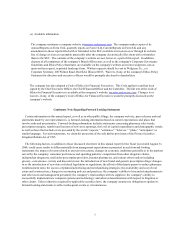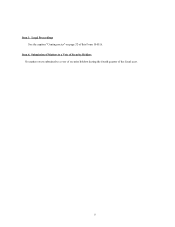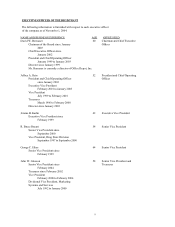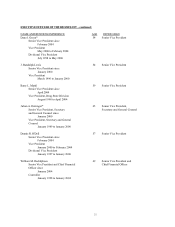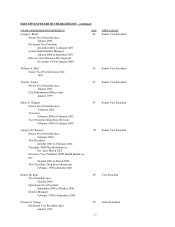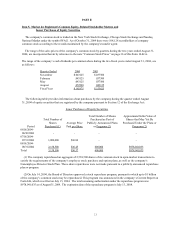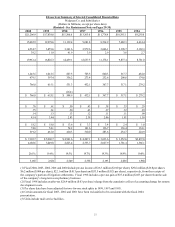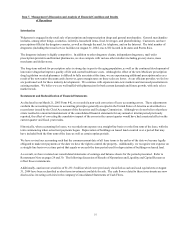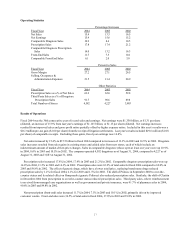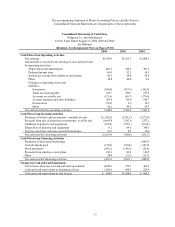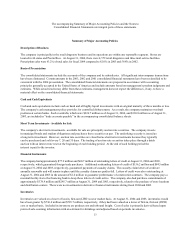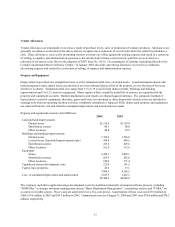Walgreens 2004 Annual Report Download - page 16
Download and view the complete annual report
Please find page 16 of the 2004 Walgreens annual report below. You can navigate through the pages in the report by either clicking on the pages listed below, or by using the keyword search tool below to find specific information within the annual report.
16
Item 7. Management's Discussion and Analysis of Financial Condition and Results
of Operations
Introduction
Walgreens is engaged in the retail sale of prescription and nonprescription drugs and general merchandise. General merchandise
includes, among other things, cosmetics, toiletries, household items, food, beverages, and photofinishing. Customers can have
prescriptions filled at the drugstore counter, as well as through the mail, by telephone, and on the Internet. The total number of
drugstores (including three mail service facilities) at August 31, 2004, was 4,582 located in 44 states and Puerto Rico.
The drugstore industry is highly competitive. In addition to other drugstore chains, independent drugstores, mail order
prescription providers and Internet pharmacies, we also compete with various other retailers including grocery stores, mass
merchants and dollar stores.
The long-term outlook for prescription sales is strong due in part to the aging population, as well as the continued development of
innovative drugs that improve quality of life and control healthcare costs. Although the effect of the new Medicare prescription
drug legislation on retail pharmacy is difficult to fully ascertain at this time, we are experiencing additional prescription sales as a
result of the new senior discount cards; however, gross margin rates on these sales are lower. As an efficient provider, we feel we
are positioned well for these industry developments. We continue with expansion into new markets and increased penetration in
existing markets. We believe we are well staffed with pharmacists for both current demands and future growth, with only select
market needs.
Restatement and Reclassification of Financial Statements
As disclosed in our March 21, 2005 Form 8-K, we recorded a non-cash correction of lease accounting errors. These adjustments
conform the accounting for leases to accounting principles generally accepted in the United States of America as described in a
recent letter issued by the Chief Accountant of the Securities and Exchange Commission. Although we do not believe that these
errors resulted in a material misstatement of the consolidated financial statements for any annual or interim period previously
reported, the effect of correcting the cumulative impact of the errors in the current quarter would have had a material effect on the
current quarter and fiscal year results.
Historically, when accounting for leases, we recorded rent expense on a straight-line basis over the firm term of the lease, with the
term commencing when actual rent payments began. Depreciation of buildings on leased land occurred over a period that may
have included both the firm term of the lease as well as certain option periods.
We have revised our accounting such that the commencement date of all lease terms is the earlier of the date we become legally
obligated to make rent payments or the date we have the right to control the property. Additionally, we recognize rent expense on
a straight-line basis over a time period that equals or exceeds the time period used for depreciation of buildings on leased land.
As a result, we have restated our consolidated statements of earnings and balance sheets for the periods presented. Refer to
Restatement Note on pages 29 and 30. The following discussion of Results of Operations and Liquidity and Capital Resources
reflect those restatements.
Additionally, auction rate securities of $1,251.5 million which were previously classified as cash and cash equivalents at August
31, 2004 have been reclassified as short term investments available for sale. The cash flows related to these investments are now
disclosed as investing activities in the company's Consolidated Statements of Cash Flows.


